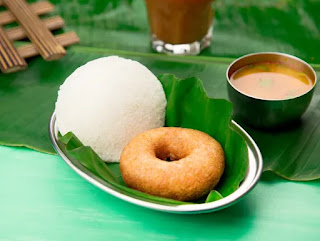Idli Vada: The Quintessential South Indian Breakfast
When one thinks of South Indian cuisine, the first image that likely comes to mind is a plate of steaming hot idlis paired with crispy vadas. These two dishes have become synonymous with the vibrant and diverse culinary traditions of South India. Simple yet flavorful, idli and vada together form a perfect combination that is not just a breakfast staple but a cultural icon. Let's delve into the world of idli vada, exploring their origins, preparation methods, nutritional benefits, and cultural significance.
Origins and Cultural Significance
Idli and vada have deep-rooted histories that date back centuries. Idli, a soft, fluffy rice cake, is believed to have originated in ancient Tamil Nadu or Karnataka, though some argue for a foreign origin, possibly from Indonesia. The preparation of idli was first mentioned in Indian literature as early as the 10th century. Over time, idli has evolved, with various regional adaptations contributing to its current form.
Vada, on the other hand, has its origins in Tamil Nadu. The most popular variety, medu vada, is made from urad dal (black gram) and has been a part of South Indian cuisine for centuries. Vada’s crispy exterior and soft, airy interior make it a perfect contrast to the soft idli.
Together, idli and vada are more than just a meal—they represent the spirit of South India. Whether served at a roadside stall, a traditional family kitchen, or a high-end restaurant, the combination of idli and vada is a comforting and beloved breakfast choice across the region.
Preparation: A Labor of Love
The preparation of idli and vada might seem simple, but it requires time, patience, and skill. The process begins with the soaking of rice and urad dal. For idli, the rice and urad dal are soaked separately for several hours before being ground into a smooth batter. The batter is then left to ferment overnight, allowing it to develop a slightly tangy flavor and a light, airy texture. The fermentation process is crucial, as it is the key to the idli’s softness.
Once fermented, the batter is poured into idli molds and steamed until they rise and become fluffy. The result is a light, spongy cake that is mildly tangy and perfectly complements a variety of chutneys and sambar.
Vada, on the other hand, requires a different approach. The urad dal is soaked, ground into a thick, fluffy batter, and seasoned with spices like black pepper, cumin, curry leaves, and green chilies. The batter is then shaped into donuts with a hole in the center and deep-fried to golden perfection. The result is a crispy exterior with a soft, melt-in-your-mouth interior.
Nutritional Benefits
Idli and vada are not just delicious—they are also nutritious. Idli is often considered one of the healthiest breakfast options available. Made from fermented rice and urad dal, idlis are rich in carbohydrates and protein. The fermentation process increases the bioavailability of nutrients, making them easier for the body to absorb. Idlis are also low in fat and calories, making them a great choice for those looking to maintain a healthy diet.
Vada, while slightly more indulgent due to the frying process, also offers several nutritional benefits. Made from urad dal, vada is a good source of protein, fiber, and essential minerals like iron, potassium, and magnesium. The spices added to vada, such as black pepper and cumin, offer additional health benefits, including aiding digestion and boosting immunity.
When paired together, idli and vada provide a balanced meal that is satisfying and nourishing. The combination of carbohydrates, protein, fiber, and healthy fats ensures sustained energy levels throughout the morning.
Idli Vada: A Cultural Experience
Beyond their nutritional value, idli and vada hold a special place in South Indian culture. They are often served during festivals, religious ceremonies, and family gatherings, symbolizing hospitality and warmth. In South Indian weddings, a traditional breakfast featuring idli and vada is considered auspicious and is served to guests as a gesture of goodwill.
Idli vada is also a favorite among the working population, offering a quick, filling, and affordable breakfast option. In cities like Chennai, Bengaluru, and Hyderabad, it is common to see people enjoying a plate of idli vada at bustling street stalls, accompanied by a steaming cup of filter coffee.
In recent years, idli vada has gained popularity beyond South India. It is now a beloved dish across India and has even found its way onto menus in international restaurants. The simplicity, versatility, and flavor of idli vada have made it a global favorite.
Variations and Modern Twists
While the traditional idli and vada are timeless, modern adaptations have added new dimensions to these classic dishes. Some popular variations of idli include rava idli (made from semolina), podi idli (coated with spiced lentil powder), and even stuffed idli with fillings like vegetables or cheese. Vada too has seen creative twists, with options like masala vada, made with a mix of lentils and spices, and sambar vada, where the vada is soaked in tangy sambar.
These variations offer exciting new ways to enjoy idli and vada, appealing to both traditionalists and those looking for something different.
Conclusion
Idli vada is more than just a breakfast dish—it is a celebration of South Indian culinary heritage. Whether you enjoy it in its traditional form or with a modern twist, the combination of idli and vada is a true comfort food that transcends generations. Simple yet complex, humble yet iconic, idli vada continues to be a beloved dish that brings people together, one delicious bite at a time.




Comments
Post a Comment